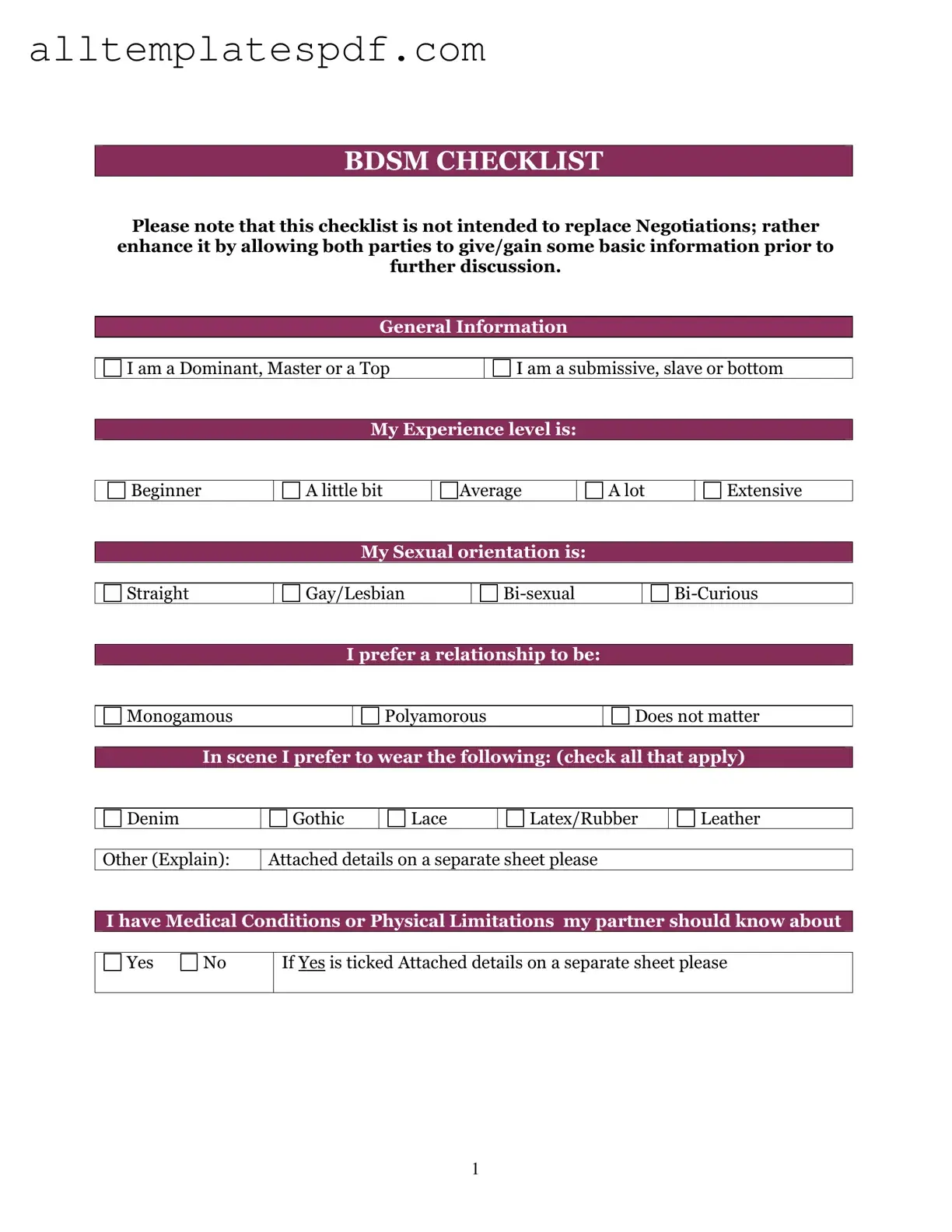When filling out the BDSM Checklist form, many people make mistakes that can lead to misunderstandings or miscommunications. One common error is not reading the instructions carefully. The checklist is designed to help individuals express their preferences clearly. Skimming through the instructions can result in missing important details about how to complete the form accurately.
Another mistake is failing to be honest about preferences and limits. It's essential to be open and truthful when indicating interests. If someone marks a preference just to please their partner or out of fear of judgment, it can lead to uncomfortable situations later on. Being genuine ensures that everyone involved understands each other's boundaries.
People often overlook the importance of discussing the checklist with their partner. Communication is key in BDSM relationships. Not having a conversation about the checklist can lead to assumptions and mismatched expectations. Taking the time to talk about what each person marked can foster understanding and trust.
Additionally, some individuals rush through the checklist, which can lead to mistakes. It's crucial to take the time to think about each item and what it means personally. Rushing can result in marking something incorrectly or forgetting to include a preference altogether.
Another frequent error is not updating the checklist over time. As interests and boundaries can change, it's important to revisit the checklist periodically. Failing to update it can lead to outdated information, which may cause issues during scenes.
Many people also forget to consider safety measures when filling out the checklist. It's vital to think about how certain activities may require specific precautions. Ignoring safety can lead to dangerous situations that could have been easily avoided with proper planning.
Lastly, individuals sometimes neglect to ask for clarification on items they don’t understand. If a term or activity is unclear, it's better to seek clarification than to make assumptions. Asking questions can prevent confusion and ensure that everyone is on the same page.
